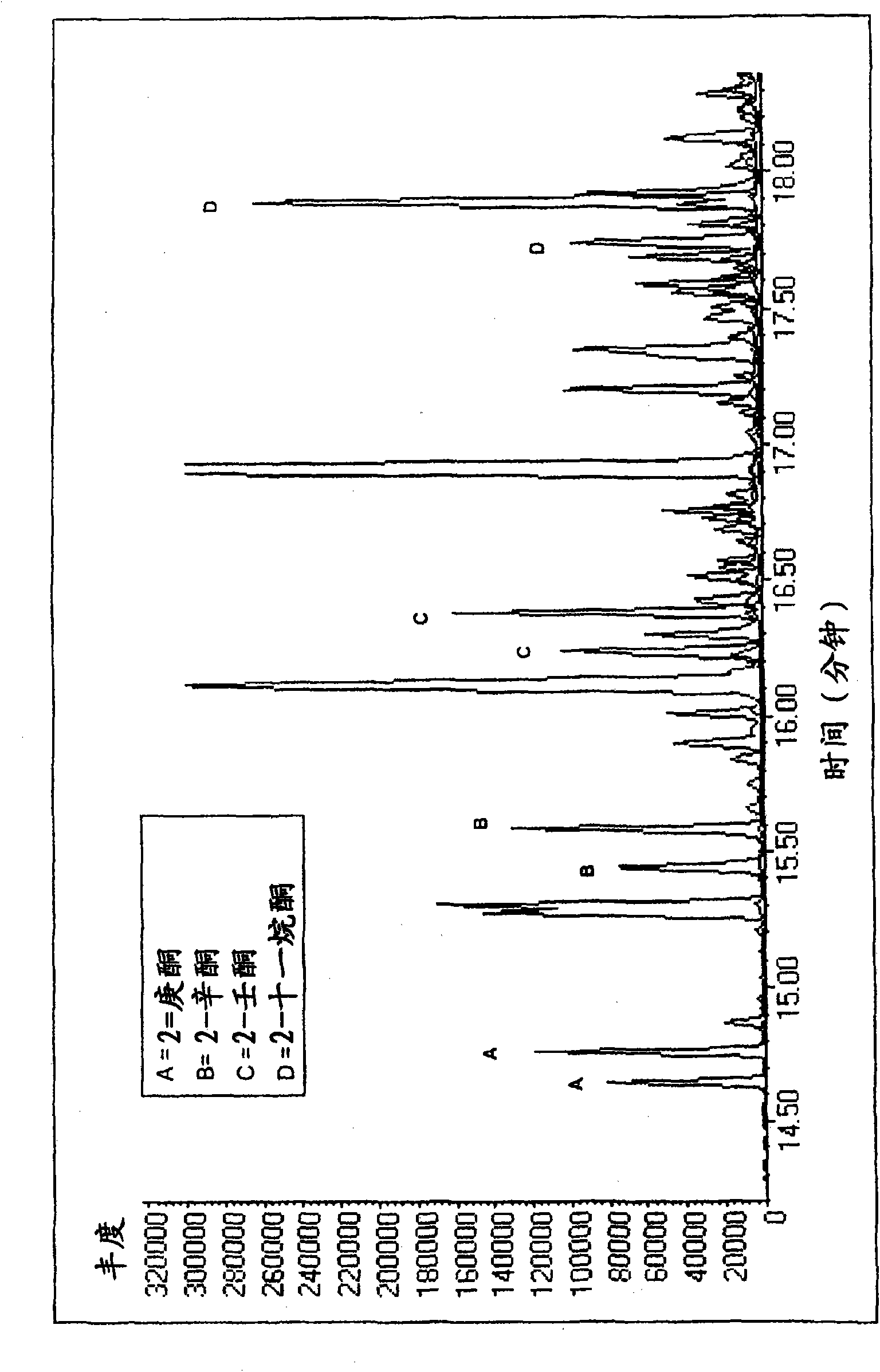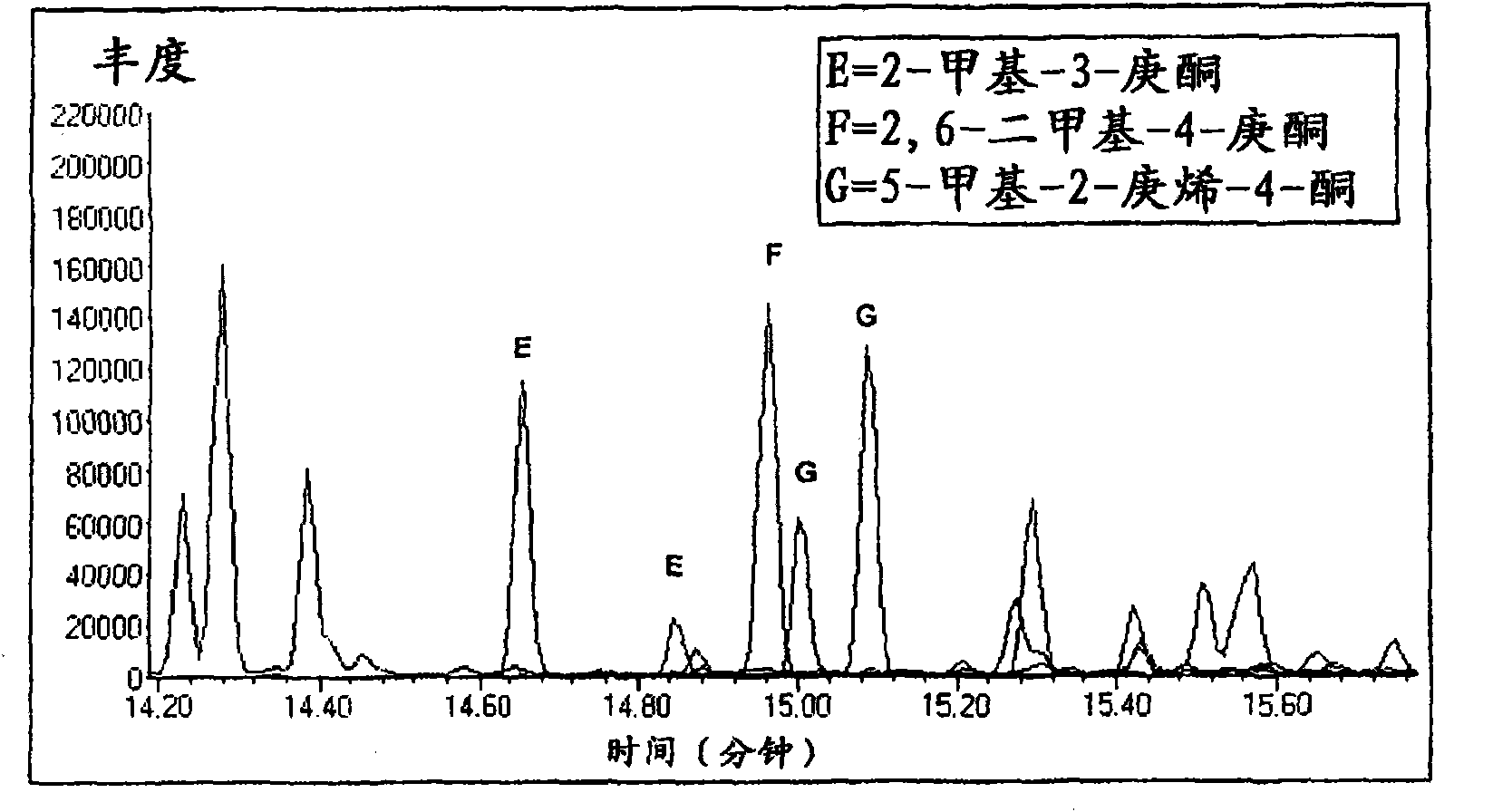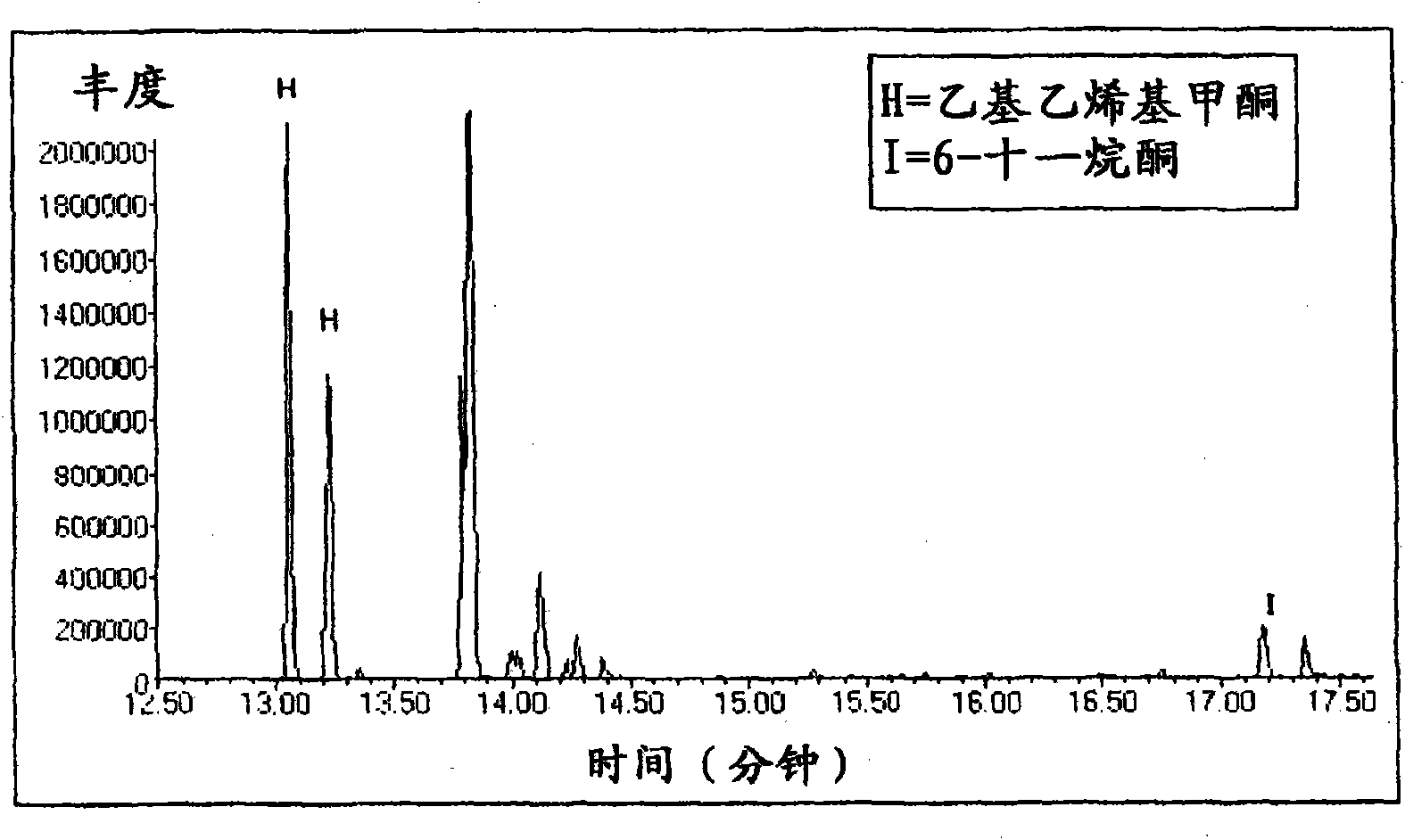Tagging method
A labeling and tracer technology, applied in material separation, food preparation, food science, etc., can solve the problems of increased consumption of biodiesel
- Summary
- Abstract
- Description
- Claims
- Application Information
AI Technical Summary
Problems solved by technology
Method used
Image
Examples
Embodiment 1
[0018] 2-Heptanone, 2-octanone, 2-nonanone and 2-undecanone were each dissolved in crude palm oil at a concentration of 500 ppb. 10 ml of the marked oil were then extracted with 5 ml of methanol while stirring at 60° C. for 1 hour. Extracts containing markers were removed. To this extract, 5 ml of 1 mg / ml O-(2,3,4,5,6-pentafluorobenzyl) hydroxylamine hydrochloride (PFBHA) aqueous solution was added, and incubated at 60°C under vigorous stirring for 2 Hour. The reaction mixture was then extracted with 2.5 ml of chloroform while stirring at 60°C for 20 minutes. The chloroform layer containing the derivative was removed and dried through a cotton wool plug before analysis using GC / MS in negative chemical ionization (NCI) mode. The GC / MS instrument used was equipped with J&W Scientific TM HP-5 capillary column (30m long, 0.32mm inner diameter, 0.25mm stationary phase thickness) with Agilent 5973 mass selective detector 6890GC. The initial furnace temperature was 50°C, held ...
Embodiment 2
[0021] 2-methyl-3-heptanone, 6-undecanone, ethyl vinyl ketone, 5-methyl-2-hepten-4-one and 2,6-dimethyl-4-heptanone Each was dissolved in crude palm oil at a concentration of 500 ppb. Then 10 ml of the marked oil were extracted with 5 ml of methanol while stirring at 60° C. for 1 hour. Extracts containing markers were removed. To this extract was added 5 ml of a 1 mg / ml aqueous solution of O-(2,3,4,5,6-pentafluorobenzyl)hydroxylamine hydrochloride (PFBHA), and incubated at 60°C for 2 hours. The reaction mixture was extracted with 2.5 ml of chloroform while stirring at 60°C for 20 minutes. The chloroform layer containing the derivative was removed, dried through a cotton wool plug, and analyzed by GC / MS using the same apparatus and method as described in Example 1. For 2-methyl-3-heptanone, 6-undecanone, ethyl vinyl ketone, 5-methyl-2-hepten-4-one and 2,6-dimethyl-4-heptanone Derivatives, signals with m / e of 303, 345, 259, 301 and 317 were detected, respectively. Figure 2...
PUM
 Login to View More
Login to View More Abstract
Description
Claims
Application Information
 Login to View More
Login to View More - R&D
- Intellectual Property
- Life Sciences
- Materials
- Tech Scout
- Unparalleled Data Quality
- Higher Quality Content
- 60% Fewer Hallucinations
Browse by: Latest US Patents, China's latest patents, Technical Efficacy Thesaurus, Application Domain, Technology Topic, Popular Technical Reports.
© 2025 PatSnap. All rights reserved.Legal|Privacy policy|Modern Slavery Act Transparency Statement|Sitemap|About US| Contact US: help@patsnap.com



